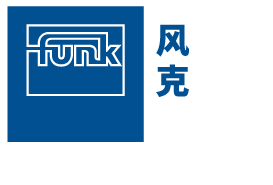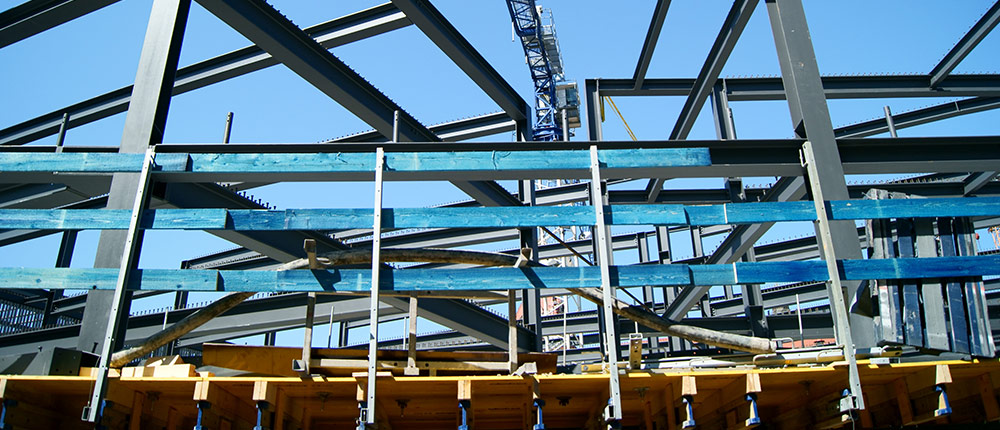Funk Baurisk
Effective cover for construction projects Claims examples from the construction and real estate industry
In a construction project in which more than one party is involved, it is usually impossible to determine which party should be responsible for a claim arising in connection with the project. This is the reason why Funk offers a comprehensive and effective solution with the BauRisk cover.
Both construction industry and real estate markets are growing: Municipalities are investing in the construction of better infrastructures, the residential real estate developers provide new living space, especially in metropolitan areas, and hospitals and other public facilities are also renovating, expanding and building new facilities. Ever larger projects go hand in hand with a higher and often more demanding risk situation. This is because various parties are involved in the construction process: architects, contractors, subcontractors and other service providers. The party responsible for the construction project and its protection must therefore bring many interests under one roof. To avoid the disorder of having to deal with various fragmented policies and cover structures, Funk has developed the intelligent BauRisk policy: based on a comprehensive risk analysis, a tailor-made insurance concept is created so that all parties that are involved in the construction project can be covered by one policy and one insurer.
Below are three claim examples from Funk clients that illustrate the advantages of the comprehensive BauRisk cover:
1. Wastewater damage but not clear who caused the damage
In 2020, a Funk client started a new construction project in Hamburg, which involved complex foundation and civil engineering work. The project was already well advanced and could not be stopped when the client noticed that large amounts of wastewater were collecting in the neighboring building. The investigation of the cause revealed that a wastewater pipe had been damaged on the construction site.
The accumulating wastewater damaged both the neighboring building and the wastewater pipe itself. It turned out that the wastewater pipe was damaged in several places: Firstly, the wastewater pipe had apparently been pierced during the anchoring process for retaining the excavation shoring and filled with concrete in the process. Secondly, there was also damage to the upper surface of the pipe. This was probably caused by a previously conducted explosive ordnance probe. Which of these damages to the pipe had led to the accumulation of wastewater could no longer be clearly determined. Without project insurance, the question of fault, contributory negligence or accountability typically is the focus of claims settlement in such a case. A coordination of the different liability insurers can significantly delay the construction process if each involved party only has its own stand-alone insurance policy and if no Funk BauRisk cover has been taken out.
The advantage of a comprehensive project insurance, on the other hand, is that there is only one insurer that covers the entire project. In addition, such damage can be settled via an extended cover for old and existing buildings within the scope of Funk BauRisk. Such a case – where the damage is clearly evident, but various causes are possible at the same time – occurs regularly, especially in large scale and complex construction projects. Project insurance ensures an efficient and fast solution in the interest of all parties involved
2. Corrosion on heating pipes
During the construction of a new residential building with commercial space in Berlin, materials were damaged during the construction work, resulting in great losses. The heating pipes were corroded at 14 places and as a result, leaked. Such corrosion in fact could have been avoided easily. However, the technical specifications in the contract failed to clearly and expressly specify what materials should be used and what precautions should be taken. In addition, the execution of the works was poor, and the necessary care was not taken in supervising the work.
Such a complex chain of errors consisting of planning, execution and monitoring deficiencies, coupled with inadequate communication, is not atypical for a construction project with numerous parties involved and typically leads to discussions about who is responsible to what extent for the resulting damages. As a result, the entire heating pipe network had to be replaced. The considerable delay in construction also resulted in substantial financial damage due to loss of revenue for the client. With Funk BauRisk, damages of around one million euros could be settled.
3. Use of facade stones without approval
Natural facade stones were to be used for a representative building project in southern Germany. However, those facade materials used in the construction were not approved by the local building authority. The client and the other parties involved in the construction nevertheless used the stones and assumed that they would subsequently receive the necessary approval (special approval in individual cases). They ignored the existing risks, in order not to delay the construction project. Usually, it is possible that such special approval would be given in individual cases. But it turned out that the stones they used lacked of some features required by the local building authority, e.g. weather resistance.
However, the approval was not granted, and dismantling of the façade became necessary. As a result, property damage and financial loss of almost 2 million euros was incurred. Thanks to the extended scope of conditions of Funk BauRisk compared to conventional insurance concepts, it was possible to settle about half of this loss, although the client was accused of committing significant contributory negligence.




